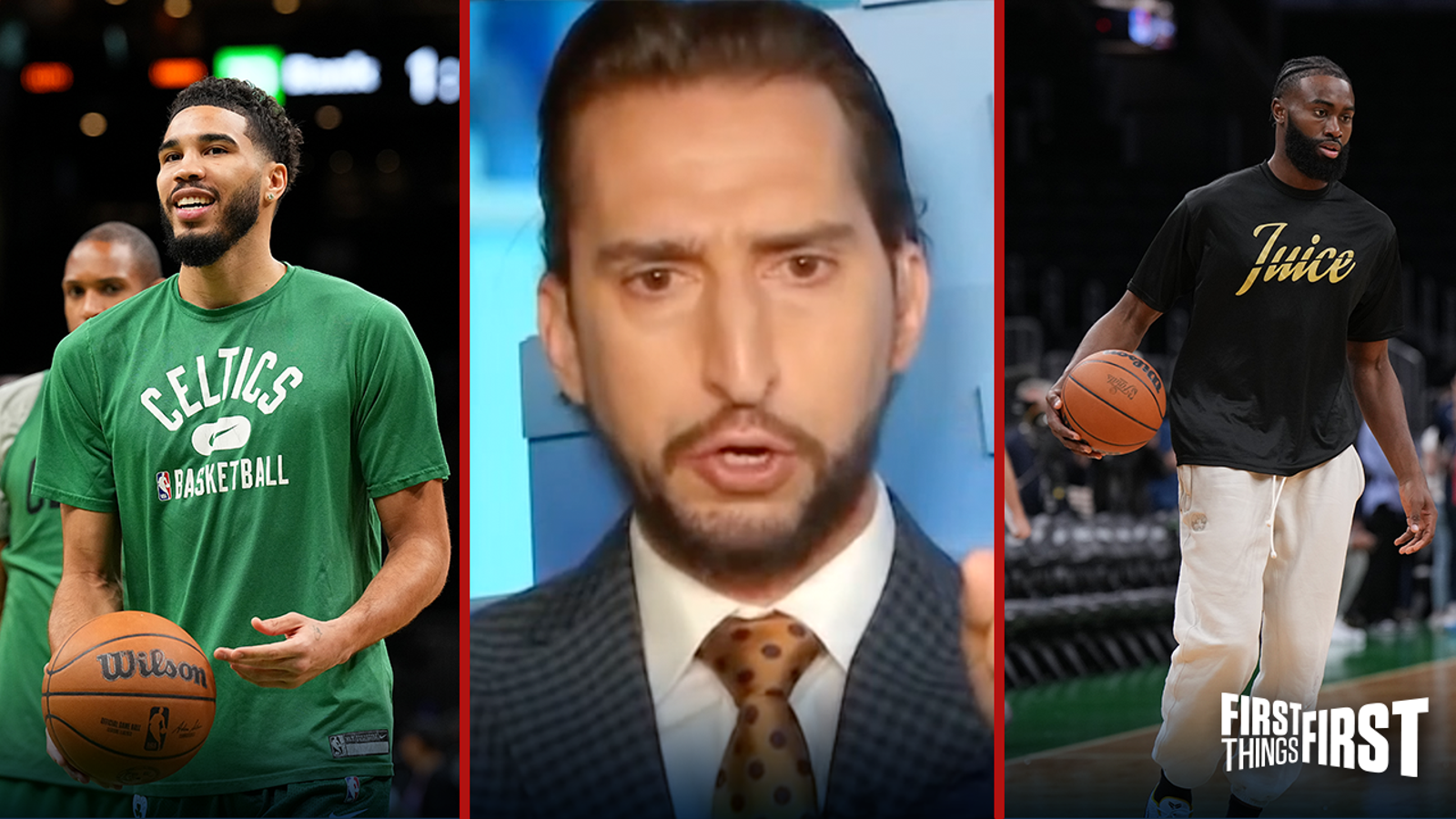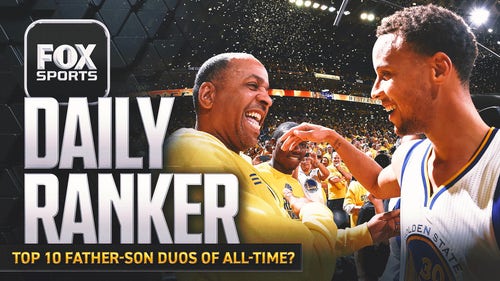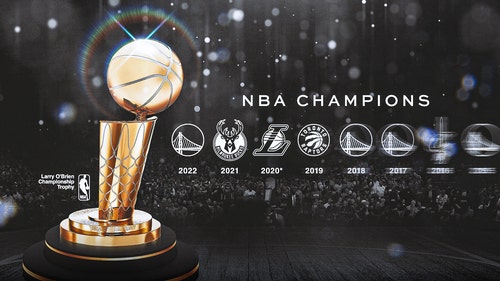
How Celtics stars Jayson Tatum, Jaylen Brown learned to play together
By Yaron Weitzman
FOX Sports NBA Writer
BOSTON — This past winter, Jayson Tatum was posed a question by a friend.
At the time, Tatum’s Boston Celtics were sputtering. Those struggles had triggered one of the NBA’s oldest tropes: Any time two young stars end up on the same team, they must be pitted against each other.
"It’s time to break Jayson Tatum and Jaylen Brown up," Kendrick Perkins, the former NBA player and longtime Celtics center, declared in January on ESPN. "Their body language says they don’t like playing with each other."
Perkins wasn’t the first pundit to proclaim that the Celtics’ young duo was destined to fail. He was, however, the loudest. Also, given his ties to Boston, his words carried weight.
In public, Tatum had been adamant about his feelings. "We see all the things about, 'We can’t play together,' and everyone in the media saying one of us gotta go," he told reporters in January. "We just had a talk about [how] we both want to be here, and we both want to figure it out."
But Tatum’s friend wanted to know if that was truly what he thought.
"There aren’t many players like Jaylen in the NBA," Tatum told the friend. "Not a lot of people who can do all the things he does."
Celtics duo overtake Steph Curry in Finals MVP race
Six months later, heading into Friday's Game 4 of the NBA Finals against the Warriors, the Celtics are just two wins away from a title. Boston reaching this point is not proof that the questions about the duo's compatibility were ill-advised but rather the opposite. It’s an example of a pair of star teammates spotting truth amid the noise and, together, learning how to grow.
"I think all of those things have helped — from saying that we need to split the group up or get rid of somebody or me and JB can't play together," Tatum told reporters after the Celtics advanced to the Finals. "That fueled us to figure it out and not run from it. That we’re obviously going to be here for a while and that we trust in each other and that we have to be better. So yeah, I think instead of separating, we became closer, and that’s shown throughout the season."
Both Tatum and Brown ended up in Celtics green courtesy of the team’s 2013 fleecing of the Brooklyn Nets in the Kevin Garnett/Paul Pierce deal. Boston selected Brown with the No. 3 pick in 2016 and Tatum with the No. 3 pick in 2017. The spotlight was on both from the start. Not only were the Celtics — unlike most teams drafting in the lottery — a group with championship expectations, but also Gordon Hayward’s devastating leg injury on opening night of the 2017 season meant that suddenly, the Celtics were relying on the contributions of their two young wings.
"We’re in a situation right now where we’re going to expect a lot out of those guys, and we need them to be great," Brad Stevens, then the Celtics' head coach, said of Tatum and Brown early that season.
They were, and the Celtics, despite losing Kyrie Irving to an injury in the playoffs, reached the Eastern Conference finals. They even pushed the LeBron James-led Cleveland Cavaliers to seven games, with the 19-year-old Tatum and 20-year-old Brown playing prominent roles.
With that run came expectations, ones that most second- and third-year lottery picks don’t have to endure. In the 2017-18 season, the Celtics, despite the returns of both Hayward and Irving, took a step back, with both Tatum and Brown struggling to find their place within a crowded ecosystem.
"I kind of got pushed to the side, and that kind of messed with my confidence a little bit," Brown said later.
He wore his frustration on his face. Even opponents noticed. During an early-season loss to the Utah Jazz, Donovan Mitchell pulled him aside to ask if he was OK.
Through it all, Brown and Tatum remained close. But Tatum had been given a bigger role within the offense, and Brown wanted more. He has never hidden his confidence (Example: Ask him about the growth of his game over the years, and the first thing he’ll do is correct you and say the skills were always there. All he needed was the opportunity), and people in and around the Celtics’ organization sense that at times he’d compare himself to Tatum.
"Both of those guys are very competitive," longtime teammate Al Horford said. "There's been a lot of growth in that part. I just think that we were all finding our ways pretty early on. They were both trying to figure it out in this league, how to play, how to be. They were still good, but they were still young. They didn't fully understand everything."
That began to change the following season. Irving left. Brown was given more responsibility and excelled. Tatum made a leap. The Celtics once again advanced to the conference finals before falling to the Miami Heat.
But that step forward was followed by another leap back. The 2020-21 Celtics season was a disaster. Both Brown and Tatum had grown into top-notch shot-makers and suffocating defenders. Both made the All-Star team. Yet something felt off. The talent wasn’t translating into wins. The offense was often stagnant and, due to the sticky hands of both Tatum and Brown, lacked fluidity and flow.
Those issues carried into this season, despite Stevens' moving into the front office and hiring Ime Udoka as the new coach. After a loss in November, Celtics guard Marcus Smart criticized both Tatum and Brown, saying, "They don't want to pass the ball."
Most of the focus on the Celtics’ turnaround this season — they were 23-24 at one point — has been on their defense developing into the league’s best. But perhaps more important was their offense’s post-All-Star-break transformation into a juggernaut. That's a direct result of Tatum and Brown learning how to play alongside each other and finding the balance between creating for themselves and others. Both players finished the regular season posting the best assist rates of their careers.
That has carried into the playoffs, as both have shown the ability to oscillate between facilitators and finishers.
"They've grown," Smart said recently. "They've had to understand that they have to mature … know when to let one go, when to help him out, when to do what you're supposed to do."
After holding on for their Game 7 win in the Eastern Conference finals in Miami, Brown and Tatum found each other in the middle of the FTX Arena floor. With giant smiles enveloping their faces and NBA Finals hats resting on their heads, they embraced.
"They said we couldn't play together!" Tatum yelled.
Neither player let go.
Yaron Weitzman is an NBA writer for FOX Sports and the author of "Tanking to the Top: The Philadelphia 76ers and the Most Audacious Process in the History of Professional Sports." Follow him on Twitter @YaronWeitzman.











